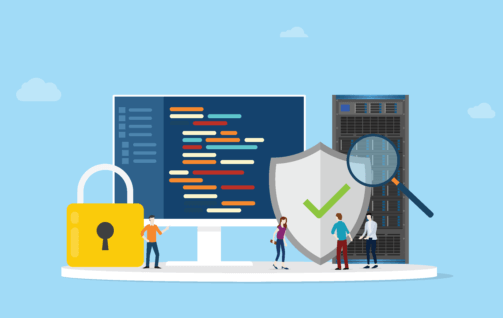The best way to protect your business livelihood is to be prepared for potential threats. With cyber-attacks and phishing scams spreading through the web, every organization must have a solid plan in case its operation is disrupted and business data corrupted. To maximize your business resilience, business processes, and privacy statement, your company must have the ability to continue operating following a disaster.
That’s where a BCDR plan comes into play. BCDR stands for Business Continuity Disaster Recovery. A Business Continuity and Disaster Recovery (or else BC and DR) strategy aims at keeping vital aspects of your business landscape going even if some part of your system is compromised.
What is Business Continuity?
Business continuity is the proactive planning and preparation done to guarantee that during emergency situations, disaster recovery plans, processes, and techniques will be activated in order for your company to retain its essential business operations.
In the case that the primary systems and/or business locations are inaccessible, business continuity plans ensure how you will continue to operate the business. Business continuity focuses on crisis management and employee safety, while keeping crucial operations going to help your business reorganize itself.
What is Disaster Recovery?
Disaster Recovery planning is a set of processes and procedures for bringing back all operations and business applications as quickly, efficiently, and safely as possible.
Disaster Recovery involves the recovery of IT systems and infrastructure when a disaster occurs, and they become unavailable. An effective BCDR plan prevents loss of data, ransom attacks, bounce back, and hardware failure, while putting into action robust recovery strategies.
Most people think of natural disaster events like fires, floods, and tornadoes to be the worst. And yet, in the world of IT, disasters mean a hacker entering your internal system or a cyber-criminal accessing sensitive data, and customer information from your files causing harm to critical business functions. Even a power outage is a disaster if your backup system can’t power itself long enough until power comes back.
By implementing good business continuity planning, emergency management, risk assessments, and clearly defined roles and responsibilities, organizations can fortify their BCDR strategy, thus enhancing resilience against disaster scenarios and unforeseen challenges.
Business Continuity vs Disaster Recovery. What Is Their Difference?
Business Continuity and Disaster Recovery serve distinct roles regarding disruptive events. Business Continuity focuses on the overall business continuity strategy to ensure a seamless response to various disruptions, including those caused by cyber incidents and ransomware attacks. It encompasses a holistic approach to maintain operations and customer experience.
Disaster Recovery, as highlighted in the Disaster Recovery Journal, specifically deals with the technical aspects of recovering IT systems and infrastructure in the aftermath of disruptive events.
What Is the Primary Purpose of a BCDR Plan?
A continuity plan focuses on and combines the roles of assessment and business continuity, maintaining continuous business operations, applications, and data.
While business continuity addresses crisis management and employee safety, disaster recovery focuses on efficient data backup and disaster recover IT systems and technology infrastructure in the event of a disruption to routine business operations.
Why is BCDR important?
Minimizing Downtime
In an era where businesses operate on a 24/7 basis, any downtime can lead to significant financial losses. All businesses nowadays rely on their internal systems and cloud storage for their operations. BCDR plans ensure that these operations can continue or quickly resume after a disruption, minimizing downtime and maintaining service availability.
Protecting Data
Data is often considered the lifeblood of modern businesses. Your documentation, specific files, industry policies, and customer and employee information determine your business brand and performance. Losing access to your data or losing parts of your sensitive information involves a serious impact on your business operation and reputation.
BCDR strategies include data backup and recovery process solutions that protect data against loss from various threats, in view of cyber-attacks, hardware failures, and natural disasters.
Maintaining Customer Trust and Reputation
Customers and partners expect reliability and security from the businesses they engage with.
Frequent outages or data breaches can erode trust and damage a company’s reputation disrupting normal operations. Imagine having to tell your customers that their personal information has been compromised and cyber-criminals have gained access to them.
An effective BCDR strategy can help maintain customer confidence by ensuring consistent service delivery and safeguarding sensitive information, in order to help an organization get back on track as quickly as possible. Lost reputation is very hard to regain which is why you should protect it at all costs.
Regulatory Compliance
Many industries have regulatory requirements that mandate certain levels of data protection, and system policies and procedures. BCDR plans put in place compliance with these regulations, avoiding legal consequences and potential fines.
Beyond the immediate loss of revenue from downtime, disruptions can also incur additional costs like recovery expenses, legal fees, and potential fines for non-compliance. BCDR planning helps mitigate these financial risks by ensuring the organization’s ability to have well-defined roles and functions.
Competitive Advantage
Organizations with clear BCDR strategies can recover from disruptions more quickly than those without. This resilience can provide a competitive advantage, especially in the aftermath of widespread events that affect multiple businesses. With Corporate Technologies, your business can stay ahead of the competition as our services ensure updated disaster and continue recovery plans and software products to help you out in case of an emergency.
Employee Productivity
Disruptions can lead to confusion and inefficiency among the workforce. A well-structured BCDR plan includes clear protocols for employees to follow during and after an incident, helping maintain productivity. A BCDR plan has a clear blueprint about how the employee contact lists, the steps your team must take in case of an IT emergency, and how to proceed to safeguard your business.
Adapting to Changing Threats
New types of cyberattacks and other risks are emerging regularly. Cyber-criminals are quite crafty but Corporate Technology specialists are outsmarting them. A dynamic BCDR plan that adapts to these changes can help organizations stay protected against the latest threats.
How Does a BCDR Plan Work?
If a disaster hits, you need a way to retrieve your data and a way for your company to move forward.
In early 2020, for instance, many companies implemented a business continuity plan, as they required employees to operate from home. They had to manage multiple locations and secure connections throughout their network and between the core location and their employees’ homes.
Although disaster recovery and business continuity are differing concepts, they work together hand-in-hand. If you plan ahead and administer a disaster recovery/business continuity plan, you can expect your business to keep functioning without a major fall in returns.
1. Know who to call
When disaster strikes, there is an inevitable sense of panic. Did ransomware strike you? Is your main operating building on fire?
You can respond to that feeling of panic more comfortably and confidently when you have a DR/BC plan in place. In the event of a disaster, Corporate Technologies has the required expertise to create a solution tailored to your business to minimize disruption.
2. Timely recovery of data
Most companies cannot afford to be down for days, let alone weeks. This is why it’s important to recover your data as soon as possible. Regarding recovering from a disaster, we use the terms RPO and RTO to better understand the risk tolerance of your business:
- RPO (recovery point objective): The measure of how far back you need to retrieve your data from.
- RTO (recovery time objective): The measure of how soon you need to have your systems back up and operating.
Each company has its own RPO and RTO. Corporate Technologies can create a tailor-made recovery plan adjusted to your business needs and customer expectations.
3. Continue without disruption to business
Since DR/BC solutions are developed to suit your RPO and RTO, you can recover from a disaster in a way that best suits your business. If you are looking for a solution that can get your company back up and running without too much interruption, Corporate Technologies can help.
4. Mitigate the risk of losing everything
Even a little bit of risk assessment goes a long way. Planning for the worst-case scenario means that risks must be balanced with costs. Obviously, you hope that you never have to use this business impact plan. Even so, you need to have it established in the event that anything does happen.
Many business owners think that a disaster can’t happen to them, while others think that cybersecurity is not that important. And yet, almost 75% of businesses faced cyber-attacks because a disaster recovery plan was far from their business mindset. Without a comprehensive business continuity DR/BC plan, you could be risking normal business operations, data loss, several days of revenue, or even worse, your entire business and your reputation as a trusted and dependable brand.
Our team at Corporate Technologies knows the importance of finding the right solution through business impact analysis for your critical business operations.
Trust Corporate Technologies for Your BCDR
To ensure business continuity and smooth business operations, organizations need to conduct regular assessments in the face of a disaster or outage. Corporate Technology can be your trusted partner in business and technology consulting and risk management strategy. Safeguard your business with state-of-the-art technology and never let a disruptive event hurt your resume operations.
Contact us today to see how Corporate Technologies can help your business with an effective DR/BC solution, tailored to your needs. We are always happy to keep your business resilient and support you on the steps you can take to continue business operations in the most efficient and profitable way.





